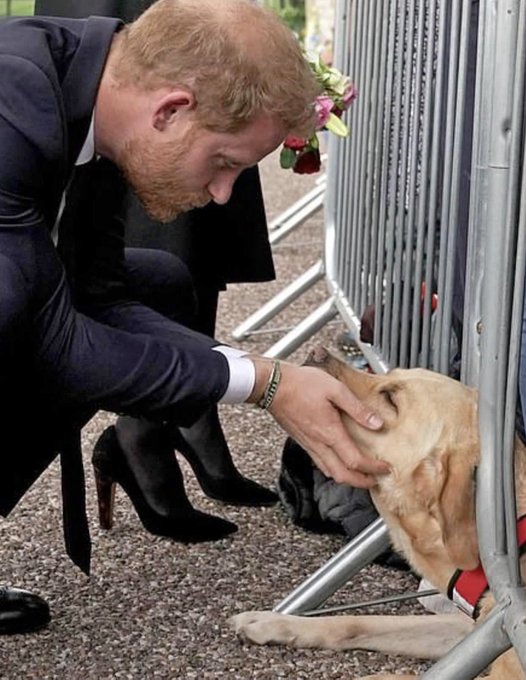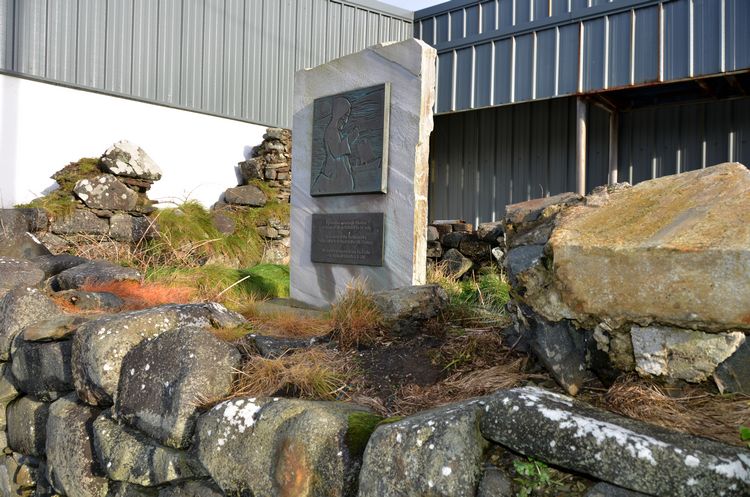Prince Harry
Cost of living crisis, health service imploding, strikes everywhere, but what is the English media obsessed with?
Oh, spare me! I was tempted to ignore it myself but the following paragraph from Prince Harry’s book convinced me that there must be a lock of Donegal blood in him. I mean where else would you have someone saying that he “came at me”...something you hear regularly in Letterkenny courthouse after a weekend of brotherly love.
Here’s the full extract which describes Prince William giving his brother a harmless wee loodering: “He set down the water, called me another name, then came at me. It all happened so fast. So very fast. He grabbed me by the collar, ripping my necklace, and he knocked me to the floor. I landed on the dog’s bowl, which cracked under my back, the pieces cutting into me. I lay there for a moment, dazed, then got to my feet and told him to get out.”

Prince Harry's book - It's all barking mad . . .
Now, I’m sure the palace will appreciate the forensic analysis of a ‘fellow’ Tir Conaill man, so here goes:
1. What was the “other name” Willie called Harry? Was it Hughie, Manus or Daniel?
2. Was he wearing a dog collar?
3. Was it Meghan’s necklace he was wearing?
4. What happened the feed of ‘Royal Canin’ in the broken ‘dog’s bowl?
5. How badly cut was he? Was he only half-cut?
6. Can the whole episode be summed up as a dog’s dinner?
BROUGHT TO BOOK
I want to thank Jamesy Gallagher of Glenties and Owenea FM for this gem.
Some decades ago, a local character spent a day or two after getting his dole spending it in a number of the local pubs.
When he ran out of money, he continued drinking on ‘tick’ until the dole came around again.
About this time, envelope collections were being introduced in local churches and one day, your man happened to run into the PP who was concerned that there had been no envelopes forthcoming from this particular parishioner since their inception: “I notice,” says the PP, “that your name is not in the book!” to which your man replied: “Well Father, it must be the only book I’m not in around here!”
THE CAN HAR’LYS
Kevin Dunleavy, along with poet Charlie Boyle, performs regularly in the Ardara/Glenties locality and I’ve had the pleasure of seeing them on a few occasions.
Now, Kevin and some other musician friends have started a group who gig in Pat McGill’s Beehive Bar and they have given themselves the wonderful name of the Can Har’lys, the explanation being: “We can har’ly sing, we can harl’y dance, we can har'ly get outa bed.”
It reminds me of the legendary Ted Ponsonby whose great bands included The Denver, Section One, The Rascals etc, and one of whose later manifestations were the Famesuckers!
Many years ago, I foolishly asked him about the significance of the latter name, and he laughed and said: “Switch the consonants!”
Aha!

The talented Ted Ponsonby of Famesuckers fame
'IN THROUGH’ IN ICELAND?
It’s quite a few years ago, thanks to research by historian Joe Gallagher in Teelin, that I wrote a feature in this column about the connection between Teelin and Iceland.
In the attached photograph, the bronze plaque on the remains of the ancient Teelin Church reads: “I gcuimhne mhanaigh Theilinn a sheol go dtí an Íoslann sa 5ú aois - In memory of the Teelin monks who sailed to Iceland in the 5th Century", and it is also written in Icelandic.
In 1947, a renowned Icelandic scholar, Professor Einar Ólafur Sveinsson travelled to Teelin and later penned a book, Impressions of Ireland, in which he remembered the early pioneering monks. That book was reissued in all three languages in 2005 by Éanna Ó Cuinneagáin from Carrick who ran the unique Cathach Books in Duke Street in Dublin.
That extraordinary journey may have been forgotten about until the aforementioned Reykjavik professor found an old manuscript with an account of a group of Irish monks and their voyage from Ireland, including a description of the place they left.

The remains of the ancient Teelin Church where a bronze plaque highlights the area’s link to Iceland
The two boatloads of monks left the monastery at Rinn na Cille, Teelin, very early in the 5th century, sailing in boats made of hide, and Einar Ólafur Sveinnsson made the return journey by more modern travel some thousand years later.
He was accompanied by research student Herman Pálsson from Iceland, stayed in Carrick and toured Teelin, Sliabh Liag and the surrounding areas with Seán Ó h-Eochaidh and teacher Seán Mac Cuinneagáin from Meenaneary. After their visit, the Iceland academics identified Teelin as the place from which the monks had made their dangerous journey circa 400 AD.
Now, a book by Thorvaldur Fridriksson, an Icelandic archaeologist and journalist, argues that Gaelic-speaking Celtic settlers from Ireland and western Scotland had a profound impact on the Icelandic language, landscape and early literature.
He has compiled a list of common Icelandic words and, with other academics, identified Icelandic landmarks that he believes have Gaelic roots. Iceland’s skaldic poetry, edda poetic traditions and the sagas upon which Iceland’s history is based were heavily influenced by Gaelic culture and immigrants, he argues.
In an interview with the Guardian, he said: “It is now well established that the first population in Iceland was much more mixed than previously accepted and therefore, the question of linguistic influence from the Gaelic needs to be addressed more seriously than scholars have been willing to do hitherto.”
He gave some examples of Icelandic words believed to be derived from early Irish and Scots Gaelic:
Lyf – Icelandic for medicine, from the Gaelic luibh, for herbs
Glíma – Icelandic wrestling, from the early Gaelic gliad, meaning battle
Ljómi – Icelandic for glow, from the Gaelic laom, meaning fire
Hrútur – Icelandic for ram, from the Gaelic reithe
Strákur – Icelandic for boy, derived from the Gaelic strácair
As regards the latter, I’m reminded of a conversation between two Teelin men some fifty years ago, as they observed a buck spaltering towards Tom Carr’s in Carrick for a wee cure after a big night. “He’s not at it long”, one ventured in sympathy. “Arrah” says the other, shaking his head in sympathy, “strácair!” (Like many Irish words, it has multiple interpretations!)
Proof, if proof were needed, professor.
TIME FOR A WIZARD?
I was very saddened to hear of the death of Gian Luca Vialli...with Ruud Gullit and Zola, he was a big hero of mine in the 1990s. As Carlo Ancelloti tweeted: “Ciao, amico mio!”
I’m not surprised at the calls for Graham Potter’s head at Chelsea, after the dreadful run of games, but the club should have kept Thomas Tuchel instead of sacking him last October...after all, Arsenal didn’t bow to fan pressure earlier this year and look how Mikel Arteta has transformed the Gunners.
If the Blues are intent on hanging in with a manager called Potter, may I suggest Harry Potter. They badly need a bit of magic.
Hogwarts Bridge has a ring to it.
Subscribe or register today to discover more from DonegalLive.ie
Buy the e-paper of the Donegal Democrat, Donegal People's Press, Donegal Post and Inish Times here for instant access to Donegal's premier news titles.
Keep up with the latest news from Donegal with our daily newsletter featuring the most important stories of the day delivered to your inbox every evening at 5pm.